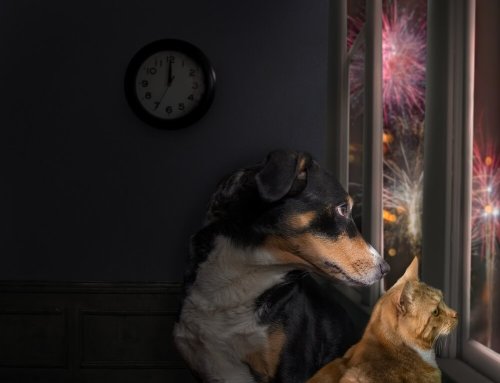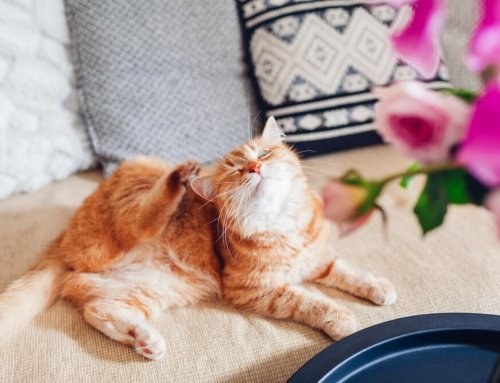Feline lower urinary tract disease (FLUTD) encompasses a spectrum of diseases that plague many cats. These disorders are caused by many conditions, but affected cats experience similar distressing clinical signs. Our 360 Pet Medical team wants to help by providing information about FLUTD and ways you can decrease your cat’s risk.
Lower urinary tract disease signs in cats
FLUTD comprises many diseases that affect a cat’s urinary bladder and urethra. Clinical signs for these disorders typically include:
- Difficulty urinating — Affected cats frequently have difficulty urinating, and they may vocalize while using the litter box.
- Frequent urination — The inflammation in the bladder and urethra can cause the cat to feel the urge to urinate, resulting in frequent trips to the litter box.
- Behavior changes — The pain and discomfort can cause some cats to avoid interaction or become more irritable around other pets and people.
- House soiling — In some cases, the cat starts to associate their litter box with pain, and they stop using their litter box, finding other spots around the house to do their business.
- Excessive grooming — The irritation can cause some cats to excessively lick the region around their urethra, causing hair loss and ulcerations.
- Pink-tinged urine — Affected cats may have blood in their urine, causing the urine to look pink or red.
- Straining to urinate — In some cases, the urethra is blocked, and the cat will strain to urinate. This is considered an emergency, and the cat needs immediate veterinary care to prevent life-threatening consequences.
Lower urinary tract disease causes in cats
Several conditions can cause signs consistent with FLUTD. These conditions include:
- Bacterial infection — Urinary tract infections can lead to FLUTD signs, but this is not a common problem in cats. Most cats affected by a UTI have a primary disease, such as diabetes, that predisposes them to the condition.
- Urinary stones — Cats can develop stones in their bladder or urethra. The most common types are struvite and calcium oxalate crystals.
- Urethral obstruction — A cat’s urethra can be obstructed if protein, cells, crystals, or other debris accumulates in the urine, forming a plug. In addition, the cat’s urethra can spasm, causing an obstruction. When the urethra is obstructed, damage can occur to the kidneys if the blockage isn’t resolved quickly.
- Feline idiopathic cystitis (FIC) — When an underlying cause can’t be found to explain the cat’s signs, FIC is diagnosed. This is the most common cause of FLUTD. FIC appears to be closely associated with stress. Affected cats typically live in multi-cat households or have other stressors in their environment. In addition, these cats have an abnormal response to stress and produce abnormal cortisol levels when exposed to stress. Abnormalities in the bladder lining also may contribute to this condition.
Lower urinary tract disease diagnosis in cats
When cats exhibit FLUTD signs, diagnostic tests used to determine the cause include:
- Blood work — A complete blood count (CBC) and biochemistry profile are performed to assess the cat’s overall health.
- Urinalysis — The cat’s urine is evaluated, looking at the color, content, and concentration. The sample is collected aseptically through the cat’s abdominal wall to ensure no contamination occurs. Blood, urinary crystals, and bacteria can be detected with a routine urinalysis.
- X-rays — X-rays can detect urinary stones in some cases, and contrast dyes may help locate urethral strictures.
- Ultrasound — Imaging the bladder via ultrasound can detect bladder stones and abnormalities such as bladder wall thickening.
Lower urinary tract disease treatment in cats
FLUTD treatment will depend on what condition is causing the signs. Potential treatments include:
- Antibiotics — If bacteria are found through urinalysis, a culture will be taken to determine an appropriate antibiotic for treatment.
- Diet change — Changing to a wet food is recommended for many cats, and certain diets can help dissolve struvite stones.
- Catheterization — When an urethral obstruction occurs, the blockage is usually resolved using a urethral catheter. The procedure typically is performed under heavy sedation or general anesthesia, and intravenous fluids may be required to help prevent damage to the kidneys.
- Surgery — Calcium oxalate stones must be removed via surgery.
- Pain medication — Medications may be prescribed to help alleviate pain in affected cats.
- Environmental management — For cats affected by FIC, environmental changes to encourage hydration and decrease stress are recommended.
Lower urinary tract disease prevention in cats

Some cats who suffer from FLUTD will have recurring episodes. While not all cases can be prevented, steps can be taken to lower your cat’s risk for developing FLUTD and reduce the frequency of attacks. These steps include:
- Keeping your cat hydrated — Ensure your cat always has access to fresh water. Provide several water sources throughout your home, and clean the bowls and freshen the water at least once a day. Some cats drink more when they have access to running water, so consider providing a water fountain.
- Feeding multiple meals a day — Calculate your cat’s daily energy requirements and divide their calories into several small meals a day.
- Meeting your cat’s litter box needs — Cats can become stressed if their litter box situation isn’t ideal. Ensure their box is in a quiet, safe area, and scoop the litter at least twice a day. If you have multiple cats, ensure you have one litter box per cat and one extra box.
- Playing with your cat — Ensure your cat gets enough mental and physical stimulation by scheduling time to play with them every day.
Regardless of the cause, FLUTD is a distressing issue for cats and their owners. If your cat is exhibiting signs that indicate they are in pain when they urinate, contact our 360 Pet Medical team so we can determine the cause and devise an appropriate treatment plan.








Leave A Comment